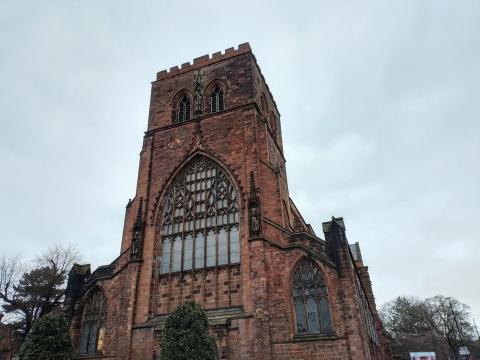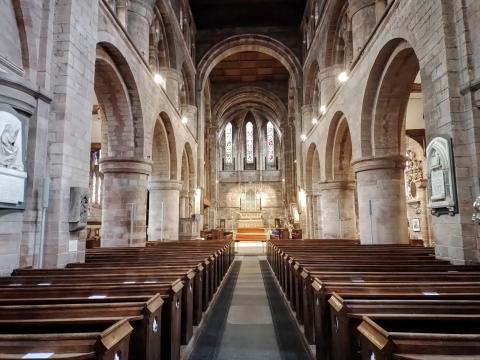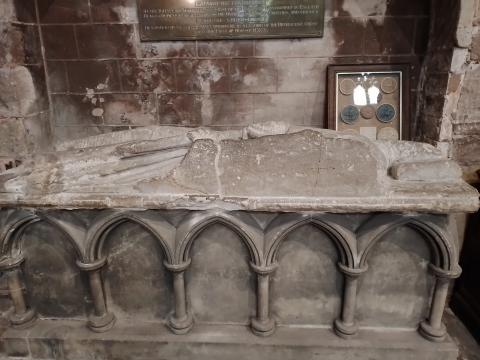Shrewsbury Abbey

Shrewsbury Abbey sits like a red mountain on the town’s south, as Simon Jenkins memorably puts it. Surviving as a parish church, albeit a rather grand one, its heyday had come to a sudden end when Henry Tudor dissolved its monastic status in the 1530s. Its heavy Norman style with its thick pillars and rounded windows, along with some Early English lancets and later perpendicular, make for a pleasing visit.

It was originally built by the local Norman warlord, Roger de Montgomery, a relation of William the Bastard, who gave up his military career and temporal wealth to become a Benedictine monk here, just a few days before he died. This wonderful conversion to piety must have brought a tear to his tenants' and serfs’ eyes. What a transformation! And just in the nick of time.

Of course, had Lord Roger been a real Christian, he might have kept his previous professions. Monks and nuns are given no better treatment by the just God of heaven, who sees through our tricks and schemes, and whose favour cannot be bought or bargained. Time will tell if Montgomery’s actions were a cynical ploy to invade heaven, or the genuine working of the Holy Spirit, convicting him of sin before he died.

Therefore of their fruits ye shall know them. Not every man that saith to me, Lord, Lord, shall enter into the kingdom of heavens; but he that doeth the will of my Father that is in heavens, he shall enter into the kingdom of heavens. Many shall say to me in that day, Lord, Lord, whether we have not prophesied in thy name, and have cast out fiends in thy name, and have done many works of power in thy name? And then I shall acknowledge to them, That I knew you never; depart away from me, ye that work wickedness. Matthew 7:20-23, Wycliffe's Bible
- Log in to post comments
